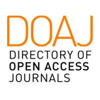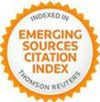Abstract
Climate change and biodiversity loss are two of the most pressing challenges of recent decades. While the former has received significant attention from both the scientific community and the public, the latter often remains in the background. Nevertheless, the two phenomena are deeply interconnected. Through advanced data analytics, machine learning, and predictive modeling, Artificial Intelligence (AI) offers powerful tools to address these global issues. In this work, we present an application of a statistical method, namely the clustering of compound events, to demonstrate how the joint analysis of two or more interacting factors can yield more meaningful insights from large datasets, such as those derived from climatological observations.
Keywords
Full Text:
PDFDOI: http://dx.doi.org/10.2423/i22394303v15Sp47
References
Ameca, E. I., Nie, Y., Wu, R., Mittermeier, R. A., Foden, W., & Wei, F. (2024). Identifying protected areas in biodiversity hotspots at risk from climate and human-induced compound events for conserving threatened species. Science of The Total Environment, 938, 173192.
Barlow, S. E., & O’Neill, M. A. (2020). Technological advances in field studies of pollinator ecology and the future of e-ecology. Current Opinion in Insect Science, 38, 15-25.
Barriopedro, D., Fischer, E. M., Luterbacher, J., Trigo, R. M., & García-Herrera, R. (2011). The hot summer of 2010: redrawing the temperature record map of Europe. Science, 332(6026), 220-224.
Benevento, A., & Durante, F. (2023). Wasserstein dissimilarity for copula-based clustering of time series with spatial information. Mathematics, 12(1), 67.
Benevento, A., Durante, F., Gallo, D., & Gatto, A. (2024). Hierarchical clustering of time series with Wasserstein distance. In Mathematical and Statistical Methods for Actuarial Sciences and Finance (pp. 49-54). Cham: Springer Nature Switzerland.
Bevacqua, E., De Michele, C., Manning, C., Couasnon, A., Ribeiro, A. F. S., Ramos, A. M., Vignotto, E., Bastos, A., Blesić, S., Durante, F., Hillier, J., Oliveira, S. C., Pinto, J. G., Ragno, E., Rivoire, P., Saunders, K., van der Wiel, K., Wu, W., Zhang, T., Zscheischler, J. (2021). Guidelines for studying diverse types of compound weather and climate events. Earth’s Future, 9, e2021EF002340.
Boero, F. (2024). A roadmap to knowledge-based maritime spatial planning. In Advances in Marine Biology (Vol. 97, pp. 167-189). Academic Press.
Calvo-Sancho, C., Díaz-Fernández, J., González-Alemán, J. J., Azorín-Molina, C., Halifa-Marín, A., Montoro-Mendoza, A., ... & Martín, M. L. (2025). Anthropogenic Climate Change Attribution to a Record-breaking Precipitation Event in October 2024 in Valencia, Spain (No. EGU25-15941). Copernicus Meetings.
Candotti, A., Ennemoser, M., Seeber, J. & Tomelleri, E. (2025). Norway spruce dominates natural regeneration five years after a large-scale wind disturbance in the higher montane and lower subalpine belts in the eastern Alps. Forest Ecology and Management, 595, 123053.
Castrovilli, R., Durante, F., Gallo, D., & Salvadori, G. (2024). Regionalization Methods for Compound Extremes Based on the Wasserstein Distance. In Scientific Meeting of the Italian Statistical Society (pp. 360-365). Cham: Springer Nature Switzerland.
Castellucci, V. (2025). La biodiversità: un alleato contro il cambiamento climatico [TEDx Talk]. TEDxSondrio. YouTube. https://youtu.be/bdpV3R0hhzI.
Chirici, G., Giannetti, F., Travaglini, D., Nocentini, S., Francini, S., D’Amico, G., ... & Marchetti, M. (2019). Stima dei danni della tempesta" Vaia" alle foreste in Italia. Forest@, (1), 3-9.
Chauvet, R. (2024). Albufera’s fragile ecosystem is at risk: Another tragic victim of València’s historic floods. Euronews. Retrieved from https://www.euronews.com/green/2024/11/14/we-really-need-to-adapt-valencias-floods-devastated-this-national-parks-fragile-ecosystem.
Clemens, R. (2025). An Evaluation of the Varied Economic Impacts of the January 2025 California Wildfires.
Colwell, R. K. (2009). Biodiversity: concepts, patterns, and measurement, pp. 257–263. Princeton University Press.
Copernicus Climate Change Service. (2025). ERA5 hourly data on single levels from 1940 to present [Data set]. European Centre for Medium-Range Weather Forecasts (ECMWF). Retrieved from https://cds.climate.copernicus.eu.
Daly, A. J., Baetens, J. M., & De Baets, B. (2018). Ecological Diversity: Measuring the Unmeasurable. Mathematics, 6(7), 119.
De Nunzio, G., & Rizzo. R. (2024). Artificial Intelligence and Biodiversity. SCIRES IT – SCIentific RESearch and Information Technology, 14 (Special Issue), 53–70. http://dx.doi.org/10.2423/i22394303v14Sp53
De Padova, D., Mossa, M., Chiaia, G., Chimienti, G., Mastrototaro, F., & Adamo, M. (2024). Optimized environmental monitoring: Innovative solutions to combat climate change. SCIRES IT – SCIentific RESearch and Information Technology, 14 (Special Issue), 43–52. http://dx.doi.org/10.2423/i22394303v14Sp43
Dunn, J. C. (1974). Well-separated clusters and optimal fuzzy partitions. Journal of Cybernetics, 4(1), 95-104.
Durante, F., & Sempi, C. (2016). Principles of Copula Copula Theory. CRC Press, Boca Raton, FL.
Folke, C., Carpenter, S., Walker, B., Scheffer, M., Elmqvist, T., Gunderson, L., & Holling, C. S. (2004). Regime shifts, resilience, and biodiversity in ecosystem management. Annual Review of Ecology, Evolution and Systematics, 35(1), 557-581.
Greener, J. G., Kandathil, S. M., Moffat, L., & Jones, D. T. (2022). A guide to machine learning for biologists. Nature reviews Molecular cell biology, 23(1), 40-55.
Holling, C. S. (1973). Resilience and stability of ecological systems. Annual Review of Ecology and Systematics, 4, 1–23. https://doi.org/10.1146/annurev.es.04.110173.000245
IPBES (2019). Global assessment report on biodiversity and ecosystem services of the Intergovernmental Science-Policy Platform on Biodiversity and Ecosystem Services. E. S. Brondizio, J. Settele, S. Díaz, and H. T. Ngo (editors). IPBES secretariat, Bonn, Germany. 1148 pages. https://doi.org/10.5281/zenodo.3831673
IPCC (2023): Summary for Policymakers. In: Climate Change 2023: Synthesis Report. Contribution of Working Groups I, II and III to the Sixth Assessment Report of the Intergovernmental Panel on Climate Change [Core Writing Team, H. Lee and J. Romero (eds.)]. IPCC, Geneva, Switzerland, pp. 1-34, doi:10.59327/IPCC/AR6-9789291691647.001
Leonard, M., Westra, S., Phatak, A., Lambert, M., van den Hurk, B., McInnes, K., ... & Stafford‐Smith, M. (2014). A compound event framework for understanding extreme impacts. Wiley Interdisciplinary Reviews: Climate Change, 5(1), 113-128.
Marinelli, E., Ghabach, E., Yan, Y., Bolbroe, T., Sella, O., Heinis, T., & Appuswamy, R. (2022). Digital preservation with synthetic DNA. In Transactions on Large-Scale Data-and Knowledge-Centered Systems LI: Special Issue on Data Management-Principles, Technologies and Applications (pp. 119-135). Berlin, Heidelberg: Springer Berlin Heidelberg.
Naughtin, C., Evans, D., Mason, C., & Trinh, K. (2025). AI for Climate R&D Roadmap: Consultation paper.
Nolan, R. H., Boer, M. M., Collins, L., Resco de Dios, V., Clarke, H., Jenkins, M., ... & Bradstock, R. A. (2020). Causes and consequences of eastern Australia's 2019-20 season of mega-fires. Global change biology, 26(3), 1039-1041.
Pallara, D. (2024). Biodiversity, Sustainability, Growth: Thoughts of a Mathematician. SCIRES IT – SCIentific RESearch and Information Technology, 14 (Special Issue), 11–16. http://dx.doi.org/10.2423/i22394303v14Sp11
Pinto, J. G., Zacharias, S., Fink, A. H., Leckebusch, G. C., & Ulbrich, U. (2009). Factors contributing to the development of extreme North Atlantic cyclones and their relationship with the NAO. Climate dynamics, 32(5), 711-737.
Salvadori, G., Michele, C. D., Kottegoda, N. T., & Rosso, R. (2007). Extremes in nature: an approach using copulas. Dordrecht: Springer Netherlands.
Senzaki, M., & Deehan, L. (2025). Wildfires in Los Angeles: Impacts on wildlife and ocean ecosystems. Environment California. Retrieved from https://environmentamerica.org/california/articles/wildfires-in-los-angeles-impacts-on-wildlife-and-ocean-ecosystems/.
Straus, D. (2019). Clustering Techniques in Climate Analysis. Oxford Research Encyclopedia of Climate Science. Retrieved 18 Oct. 2025, from https://oxfordre.com/climatescience/view/10.1093/acrefore/9780190228620.001.0001/acrefore-9780190228620-e-711.
Thompson, I., Mackey, B., McNulty, S., & Mosseler, A. (2009). Forest resilience, biodiversity, and climate change. In Secretariat of the Convention on Biological Diversity, Montreal. Technical Series no. 43. 1-67. (Vol. 43, pp. 1-67).
Ullah, F., Saqib, S., & Xiong, Y. C. (2025). Integrating artificial intelligence in biodiversity conservation: bridging classical and modern approaches. Biodiversity and Conservation, 34(1), 45-65.
Urban, M.C. (2015). Accelerating extinction risk from climate change.
Science, 348, 571-573.
Vicente-Serrano, S. M., Beguería, S., & López-Moreno, J. I. (2010). A multiscalar drought index sensitive to global warming: the standardized precipitation evapotranspiration index. Journal of Climate, 23(7), 1696-1718.
World Wildlife Fund and Zoological Society of London (2024) – processed by Our World in Data. “Living Planet Index” [dataset]. World Wildlife Fund and Zoological Society of London, “Living Planet Index” [original data].
Zoological Society of London & WWF. (2025). Living Planet Index statistics portal. Retrieved from https://stats.livingplanetindex.org.
Zscheischler, J., Martius, O., Westra, S. et al. (2020). A typology of compound weather and climate events. Nat Rev Earth Environ 1, 333–347.
Zscheischler, J., Westra, S., Van Den Hurk, B. J., Seneviratne, S. I., Ward, P. J., Pitman, A., ... & Zhang, X. (2018). Future climate risk from compound events. Nature Climate Change, 8(6), 469-477.
Article Metrics
Metrics powered by PLOS ALM
Refbacks
- There are currently no refbacks.
Copyright (c) 2025 Alessia Benevento, Fabrizio Durante

This work is licensed under a Creative Commons Attribution-NonCommercial-NoDerivatives 4.0 International License.
SCIRES-IT, e-ISSN 2239-4303
Journal founded by Virginia Valzano





